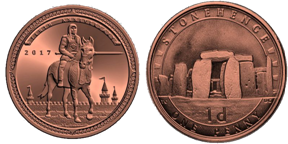Steve, those two IHCs are nice! The color appears original with no overt evidence of cleaning.
Firstly, there's something very dramatic about your 1907--that's the
huge die crack crossing the reverse.

This isn't the
normal place for reverse cracks to appear, which typically begin at an edge, then cross into either the shield or follow the wreath. These are typical fracture points during later die life, which don't appear on this coin. How the crack crosses the strongest die areas suggests a special situation--such as a poorly prepared die with internal stresses. As such, this particular die pair may have had a short run; it wouldn't be long before it split in two pieces. While die cracks aren't a "variety" for IHC collectors here, I think this one is
especially dramatic and would warrant collector interest.

Thanks for showing the closeups on the dates. There are a lot of repunched dates for both years, which occur when the machinist first made a positioning mistake, then repositioned the gang press that impressed the date in each individual die. I believe these second impressions were made, and then the die fields were polished down to reduce visibility. This may account for most RPDs being found within protected areas such as interiors of numerals--just a little explanation of what happened.
On both coins, there's a bit of dirt in the digits, which obscures things--but this shouldn't be cleaned. If you're interested further, take a loupe and look closely inside the digits for any raised lines or shapes that could be underlying digits. It will look like a repeated curve with an offset from the main digit, such as the dramatic example below. When these RPDs are more severe, they actually affect the
shape of the primary digits, as seen here:

On your 1907, I pointed out a few areas of the date below where you might look for raised areas on the coin.
If you find any, this would be a "discovery coin", as no known varieties have that dramatic reverse die break.




